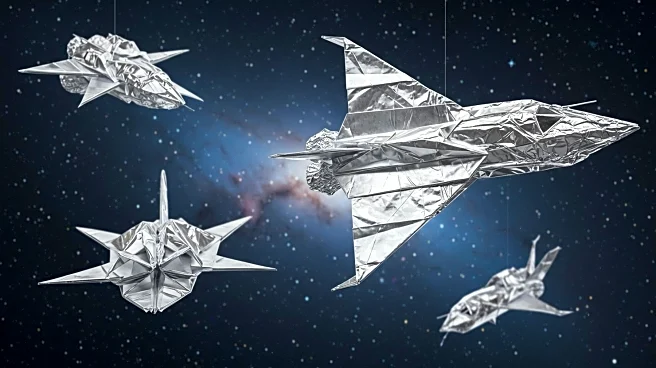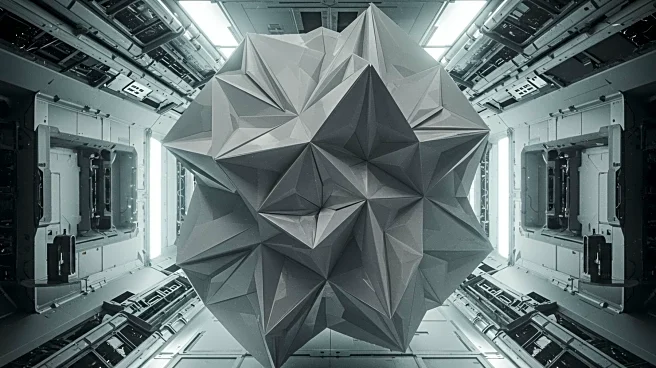What is the story about?
What's Happening?
Engineers at Brigham Young University, led by Larry Howell, have developed a new class of origami structures known as 'bloom patterns.' These designs unfold in a single, smooth motion to form flower-like shapes, which could be utilized in space applications such as telescopes and solar panels. The origami structures are based on the traditional Japanese paper-folding art, allowing them to be compactly stored and then expanded into larger forms. Unlike previous origami patterns, which could be complex and prone to deployment failures, the bloom patterns offer a more reliable unfolding process. The team has classified these patterns and provided a mathematical explanation for their functionality, demonstrating their effectiveness with materials like plastic and acrylic.
Why It's Important?
The development of these bloom patterns holds significant potential for space technology. The ability to unfold structures in one motion reduces the risk of deployment errors, which is crucial in space where a single failure can compromise an entire mission. This innovation could lead to more efficient and reliable deployment of space telescopes and solar panels, enhancing their performance. The curved shapes of the bloom patterns could allow for more accurate imaging in space telescopes, similar to Earth-based telescopes. Additionally, the mathematical modeling of these patterns can expedite the design process for future origami-based structures, potentially leading to new inventions and applications in space exploration.
What's Next?
The next steps involve further testing and refinement of these bloom patterns to ensure their reliability and effectiveness in space conditions. Researchers may explore additional materials and configurations to optimize the designs for specific space applications. Collaboration with space agencies and industry partners could facilitate the integration of these origami structures into future spacecraft designs. The potential for these patterns to revolutionize space technology could lead to increased interest and investment in origami-based engineering solutions.
Beyond the Headlines
The use of origami in engineering highlights the intersection of art and science, showcasing how traditional practices can inspire modern technological advancements. This development also emphasizes the importance of interdisciplinary research, combining mathematics, engineering, and design to solve complex problems. The success of these bloom patterns could encourage further exploration of origami-inspired solutions in other fields, such as architecture and robotics, where compact and efficient designs are valuable.
AI Generated Content
Do you find this article useful?











